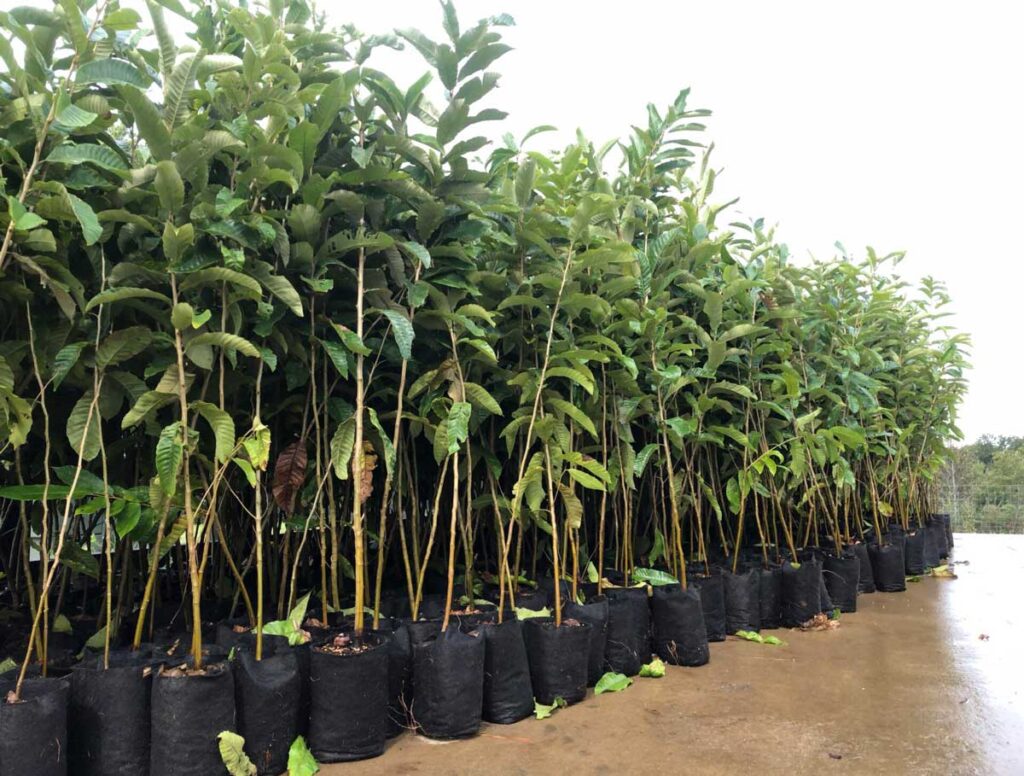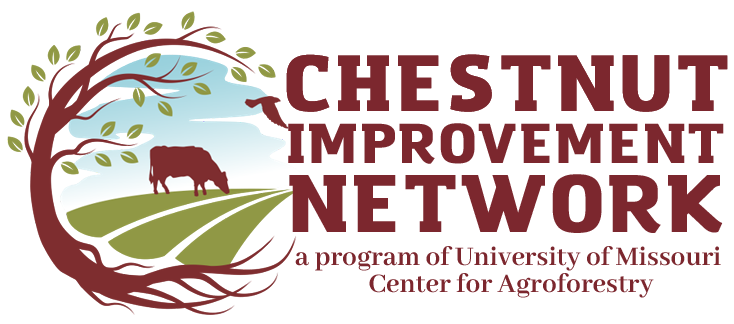What’s Grown? Seedlings vs Grafted
Grafted Cultivars vs Seedlings
Chinese chestnuts can be established by planting grafted cultivars or by planting seedling families at a high density and applying selection criteria to select for high performing seedlings and remove poor performing seedlings. Each method has advantages and disadvantages
- Earlier nut production
- Uniform ripening window
- Show variability in nut quality
- Reduced vigor
- Increase incidence of graft failure
- Production an adequate volume of quality nuts
- Opportunities for cultivar families to produce superior seedling offspring
- Genetic diversity to select for regionally specific adaptations
- Trees more resilient to stress (cold hardy, pest and disease tolerance, etc.)
- Variable harvest timing and long-lasting harvest window
- Applying selection criteria to remove flawed seedling trees, makes it challenging to thin the orchard in a uniform pattern


Grafted Cultivars
Issues with grafting incompatibility, crop inconsistency, and reduced vigor suggest that grafted Chinese chestnuts may not always by the best option for production the eastern U.S. Grafted trees are typically best suited to environments with excellent soils in with milder winters such as southern climates, or in the western U.S. where C. sativa/C. crenata are cultivated.
Evaluation of chestnut cultivars best suited for the Missouri is underway at MU Center for Agroforestry. Chestnut cultivar trials were established in Mid-Missouri in 1996 to provide long-term data on tree form, annual yields, nut size, nut quality, and ease of harvest. This cultivar trial has also served as a value source of chestnut seeds to support the growth of the chestnut industry.
Seedling Families
Seedling orchards of primarily C. mollissima are well-suited for eastern U.S. chestnut production. Chinese chestnut seedlings are now available in nurseries across the eastern U.S. They are typically a far more affordable option than grafted trees. The Chestnut Improvement Network is coordinating this effort with growers to track the cultivar families that are showing the greatest quality offspring. This will help to determine the best parental combinations for the most productive and resilient seedling orchards. For many growers in the Network, Chinese chestnut seedlings offer the greatest opportunity for successful chestnut production. Seedling orchards will perform very well in southern climates but will also (with the proper genetic background) have the resilience and cold hardiness to perform well in northern climates as well.

302ABNR Bldg. Columbia, MO 65211




